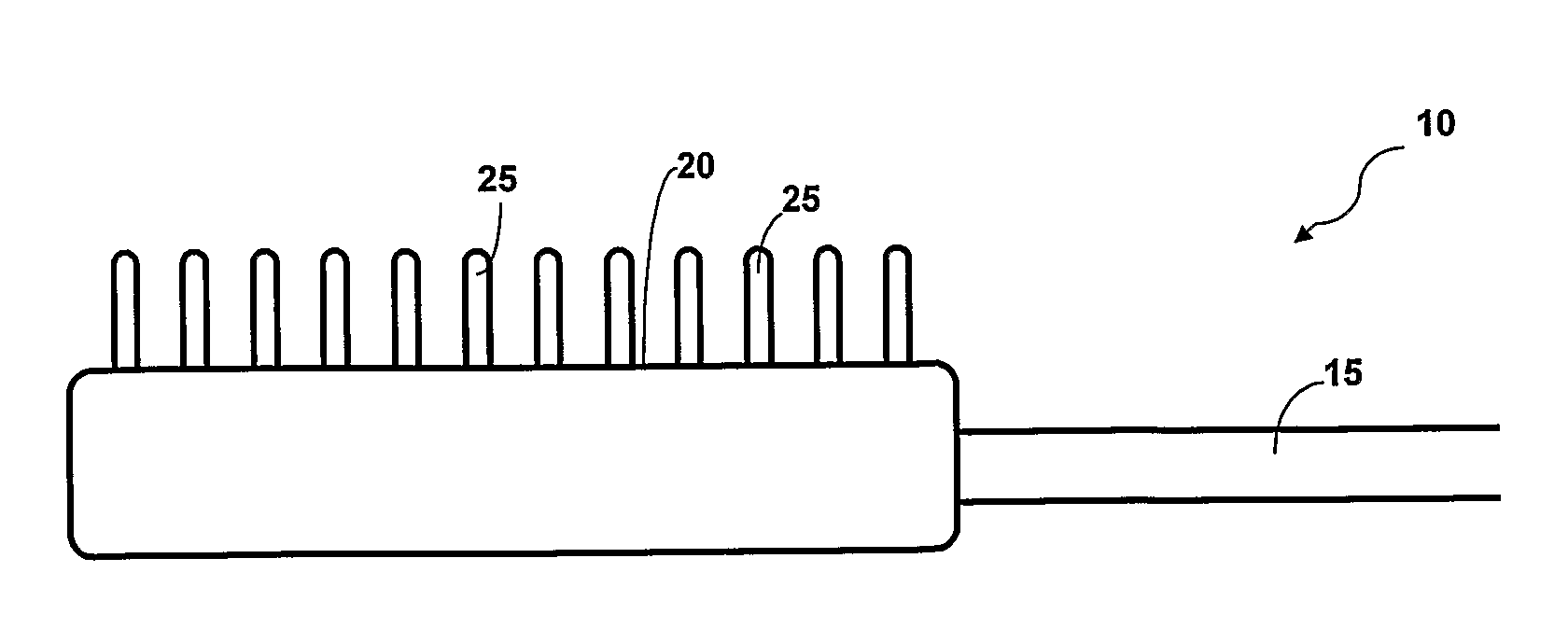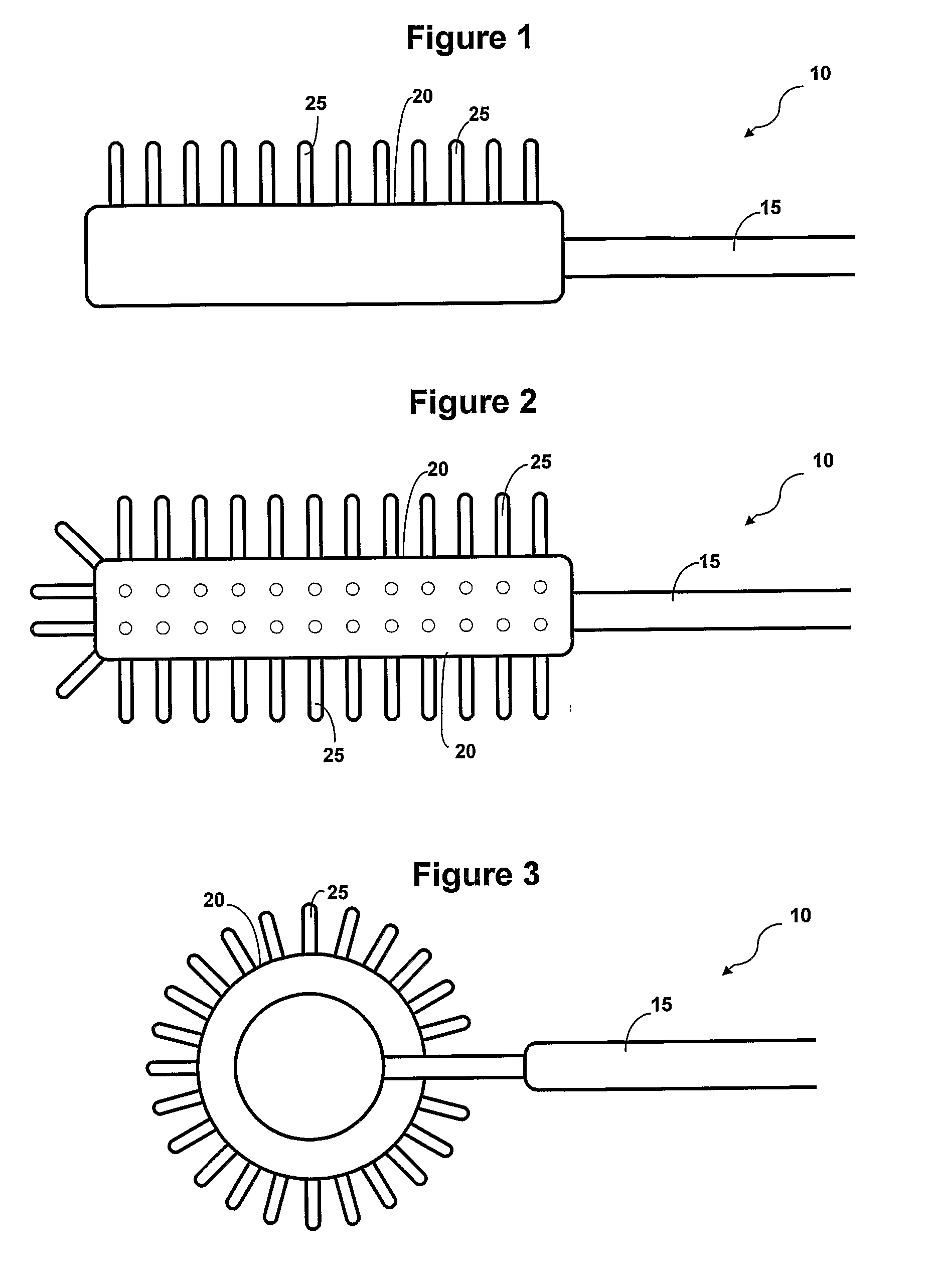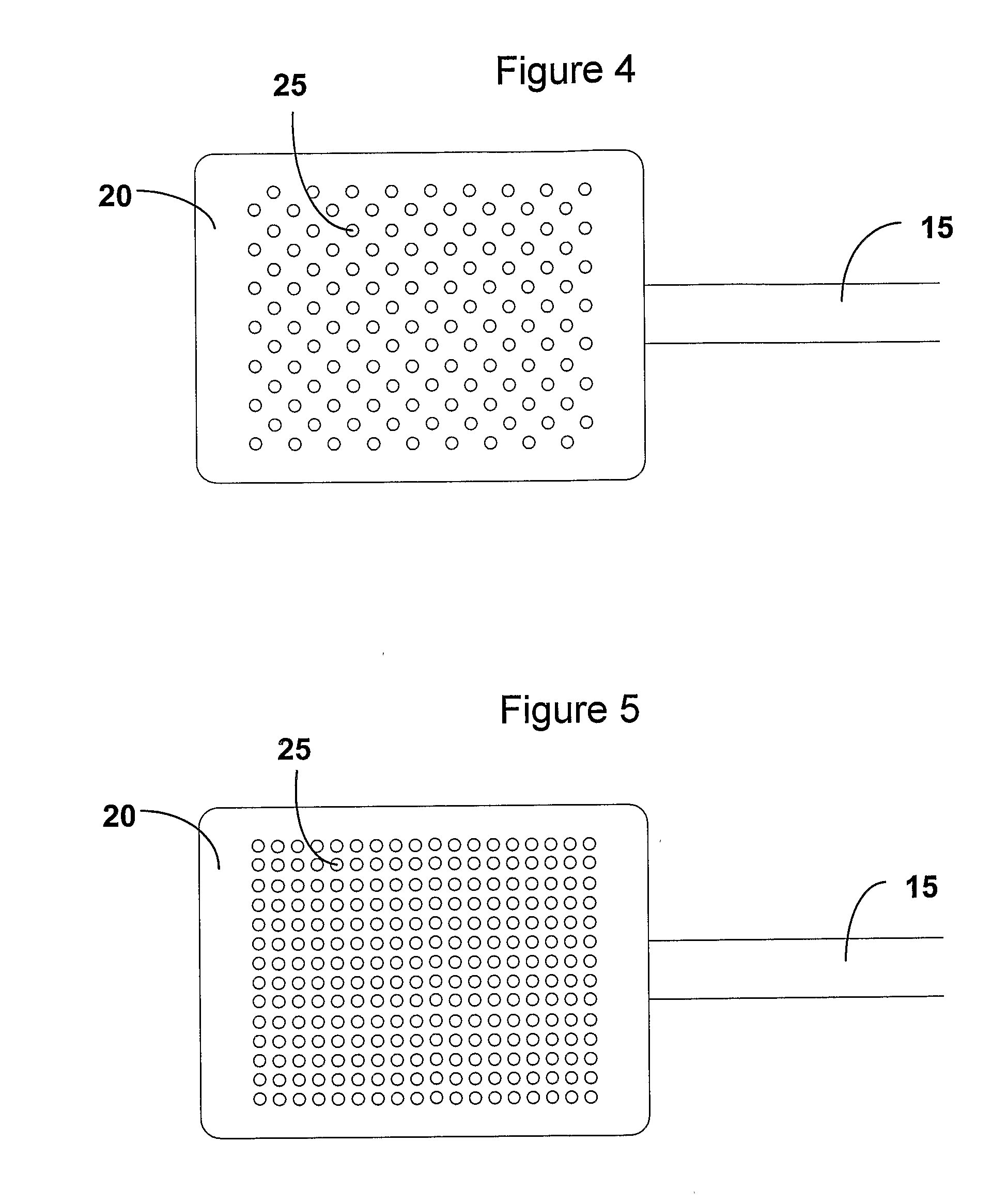Device and Method for Treating Tissue
a tissue and device technology, applied in the field of tissue devices and methods, can solve the problems of irritating use, acne scars, burn scars, and many undesirable skin conditions, and achieve the effect of reviving the skin surfa
- Summary
- Abstract
- Description
- Claims
- Application Information
AI Technical Summary
Benefits of technology
Problems solved by technology
Method used
Image
Examples
example
[0065] A freshly exercised pig skin was obtained. A monopolar electrode array was placed upon the skin. The array consisted of two 0.3 mm length needles placed in a row 500 microns apart. The array was hooked up to an electrical generator. A power of 50 watts and an energy of 1 joule were delivered to the electrode array. A 4 mm punch biopsy was taken and process for routine light microscopy. Upon examination of the tissue, both the epidermis and dermis were perforated by two equivalent vertical perforations. The perforations were widest at the top (50 to 100 microns in diameter) and tapered to a point at a depth of 250-300 microns. Throughout the edge of the injury, a 10-50 micron zone of coagulation was also seen.
PUM
 Login to View More
Login to View More Abstract
Description
Claims
Application Information
 Login to View More
Login to View More - R&D
- Intellectual Property
- Life Sciences
- Materials
- Tech Scout
- Unparalleled Data Quality
- Higher Quality Content
- 60% Fewer Hallucinations
Browse by: Latest US Patents, China's latest patents, Technical Efficacy Thesaurus, Application Domain, Technology Topic, Popular Technical Reports.
© 2025 PatSnap. All rights reserved.Legal|Privacy policy|Modern Slavery Act Transparency Statement|Sitemap|About US| Contact US: help@patsnap.com



